Layering cardboard on the bottom of your no dig garden bed is the best way to stop the weeds from growing through and affecting plant growth. You can take a brand new space with weeds and turn it into a new garden bed within 2 hours. Layering a new garden bed with compost and aged manure and topping with mulch is simple and easy.
Good quality, plain cardboard without tape or a shiny coating will break down in 3 months. Thick cardboard like packing cardboard can take 4 months or more to break down. If you want your plant to reach deeper into the soil before this time then make a so just the plant roots can reach through.
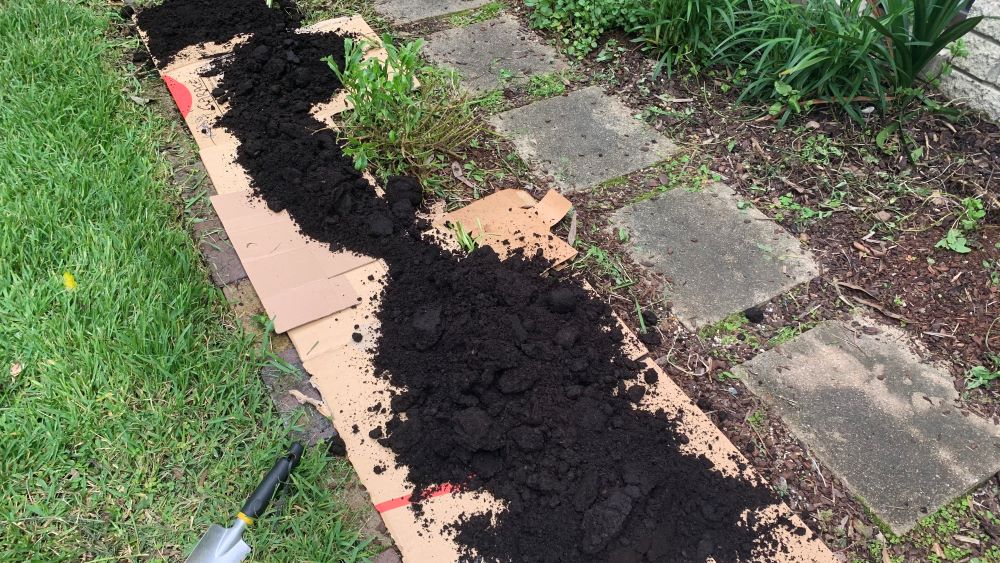
This article will explore how long it takes for cardboard to break down in your soil. It will depend on a few factors including the type of cardboard you use and the layers you put on top. Read on to get a good guide on what will happen to cardboard in a no-dig garden.
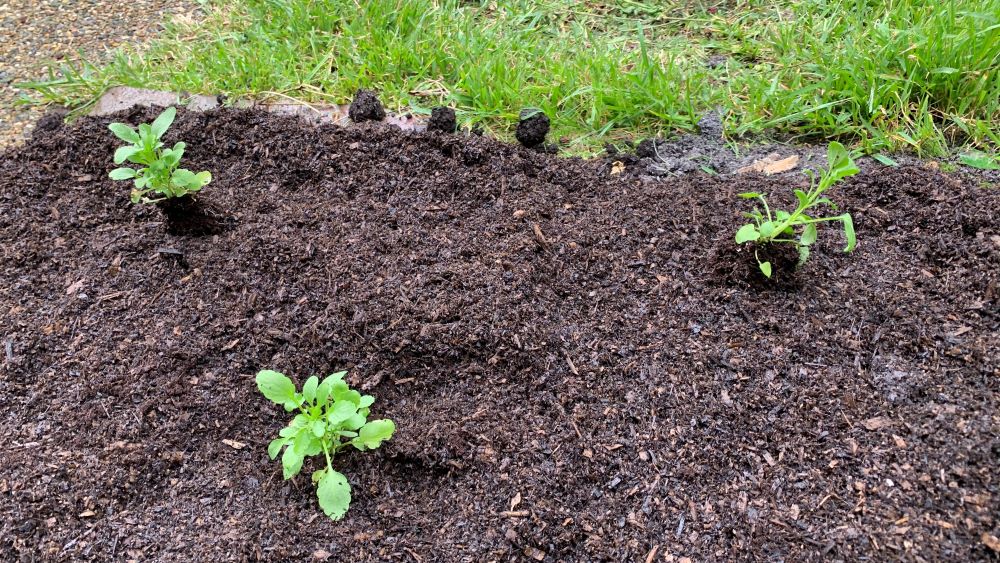
What influences cardboard break down time for no-dig garden beds
Here are the top factors that affect cardboard break down in no-dig garden beds. All of these factors will either slow down or speed up the rate at which the cardboard breaks down and disappears into your soil.
1. Thickness of the cardboard
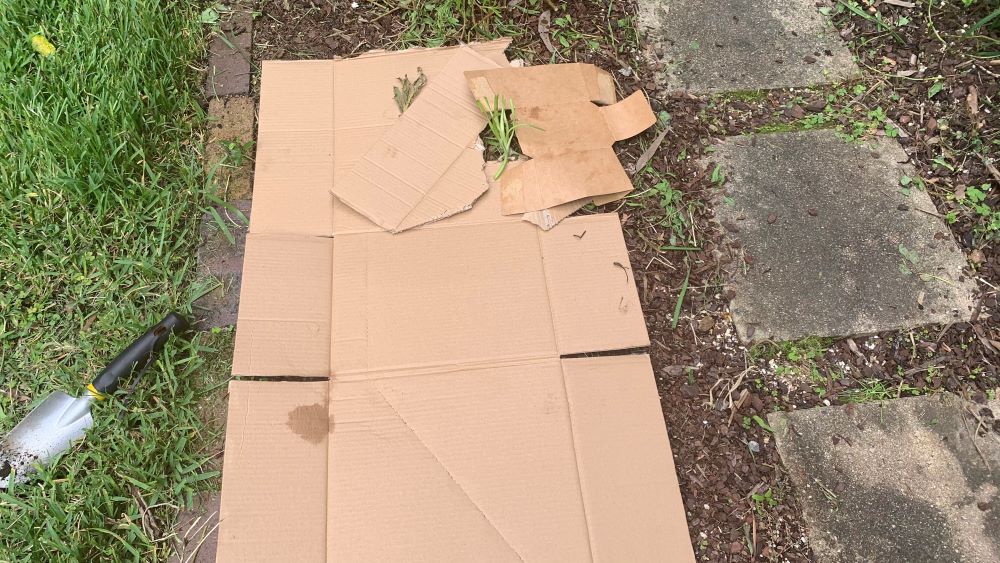
The thickness of your cardboard will affect how quickly it breaks down in your soil. Heavy duty packing boxes are almost twice as thick as regular cardboard used to ship items. It can take over 4 months to break down and can even last for 6 months or more.
I use thick packing cardboard when I can to make new garden beds. This will give it longer to smother the weeds and longer for my plants to establish. If you are using this method for your vegetable garden you can even repeat the layer of cardboard after 6 months on top of the existing layers.
2. Type of cardboard
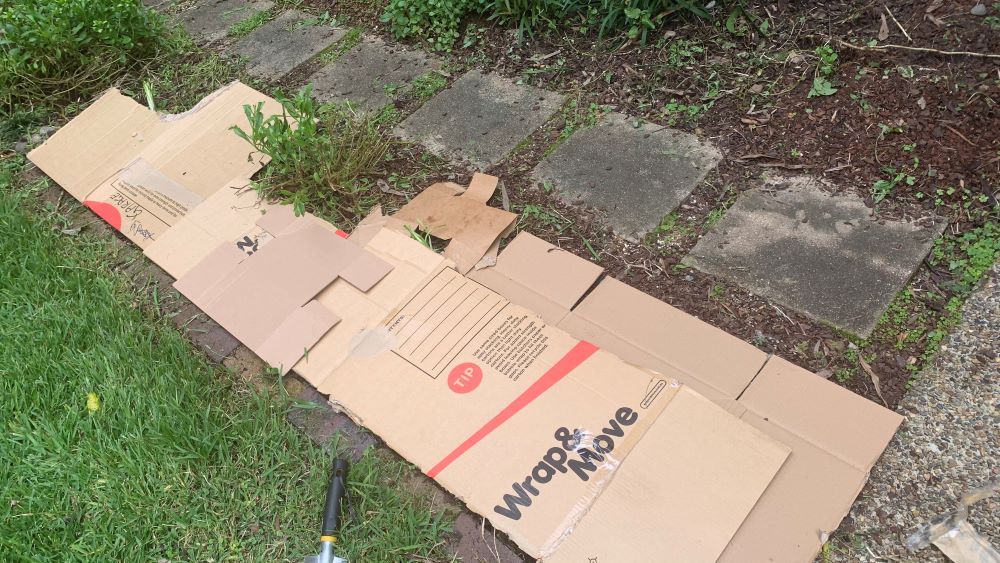
Choosing a plain cardboard without any glossy finish will allow the cardboard to break down in around 3-4 months. Cereal boxes for example have a colored and gloss finish so will take longer to break down.
While these are fine to add to your cardboard layer if they are not covered in plastic, they do take longer to break down. You can end up with plastic pieces in your soil that will stay there for years.
Worms and soil bacteria will break down plain cardboard faster. The ink will not affect the break down process and is usually made from plant based dyes.
I like to use packing boxes if I have them or any plain parcel box. These are usually plain or brown in color and break down
3. Moisture levels
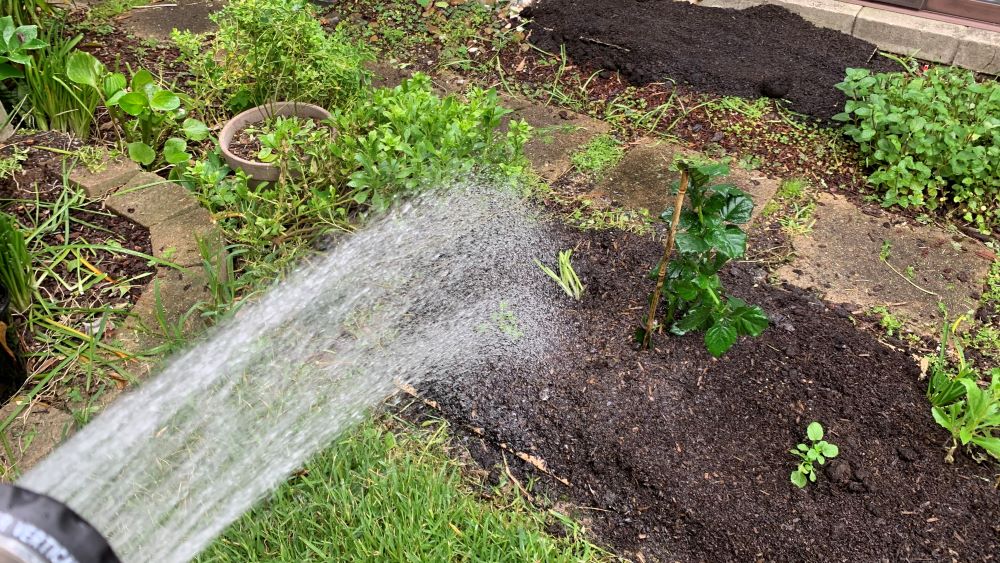
The moisture levels in your soil and raised garden bed have a big impact on how fast the cardboard will break down. If the garden is kept moist throughout spring and summer then it will break down nicely in around 3 months. Works will be attracted from the deeper ground soil to the organic matter and moisture.
They will move in and eat the soil bacteria and cardboard helping it all to break down and mix together. You eventually want the cardboard to break down and be incorporated into the soil. By the time this happens the weeds should have been smothered long enough that they will find it hard to sprout and grow through the layers.
Note: Fast growing grasses like kikuyu can spread through the cardboard and garden bed fast. For more on how to keep kikuyu grass out of your garden bed, check out my article here: How to stop kikuyu invading garden beds | Top 6 Solutions
4. Types of layers on top
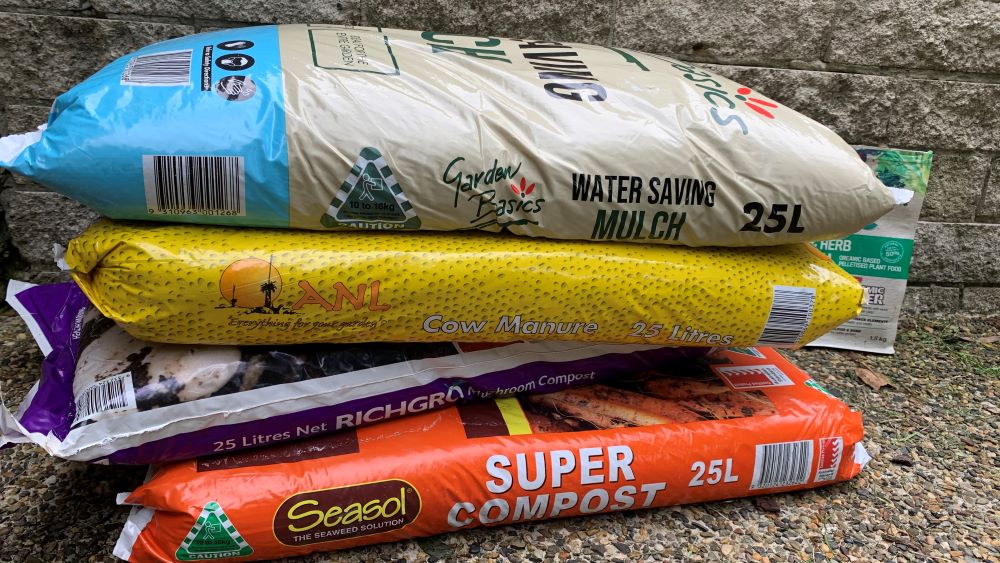
The types of layers you put on top of your cardboard will also have a big influence on the rate at which the cardboard breaks down. If you are creating a shallow garden bed for annual flowers like me then you can add a mix of different composts and aged manures. This nutrient rich mix is perfect for grow all sorts of annual flowers and will feed the good bacteria in the soil.
The good bacteria will work with the worms to break down the cardboard slowly over time. If you are using cardboard as base for a deeper raised garden bed (16 inches deep) or more then it will take longer to break down. This is because you will usually start with a coarse sand layer which less bioactive than soil or compost.
5. Seasons

The season will also influence the rate at which the cardboard will break down in your soil. Spring and summer where there is more bacterial activity will usually result in the cardboard breaking down faster. This combined with moisture from rain or from watering will speed up the process.
You may find that by the end of summer thin cardboard has completely broken down even if you only add it at the start of the season.
If you are setting up a garden bed in fall, then the cooler weather will usually slow the break down of the cardboard. I have set up my garden bed at the start of fall to grow my winter annual flowers. I expect that this thick packing cardboard will still be here (in part) by the end of winter to stop the weeds.
6. Soil bacteria and worms
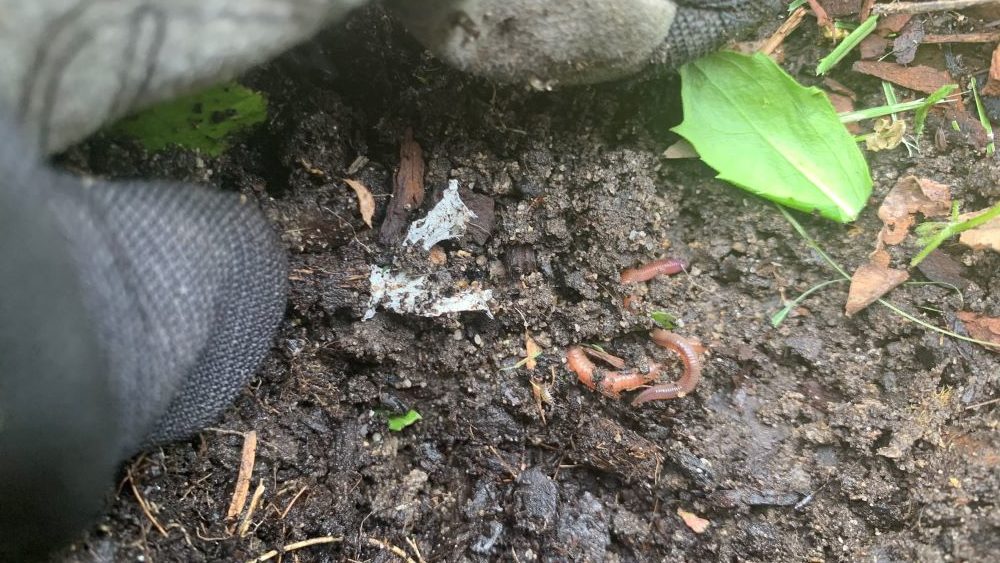
The amount of soil bacteria and worms in the soil has a large affect on how fast the cardboard will break down. If you have healthy soil with lots of organic matter it will be rich and full of healthy bacteria and worms. They will find their way to the cardboard and break it down fast.
If you are adding good quality organic matter on the top layers of your no dig garden bed then this will also allow the cardboard to break down. Compost and cow manure will each contain a unique range of bacteria that will feed on the cardboard.
How long for cardboard to break down in soil | Summary
Cardboard will break down under the layers of a no-dig garden bed in around 3 months. This can be extended to 6 months or more if the cardboard is thick, the weather is cold and if it is stuck under sand layer. Keeping the garden bed moist is essential for new seedings and vegetables and will also help cardboard to break down fast.
Happy gardening.
I am an accredited practicing dietitian, experienced gardener and a dedicated cook. I love writing and sharing my experience so you can learn from my successes and mistakes.
